I. BASIC CONCEPTS
BUILDING THE COGNITIVE MAP
To build a cognitive map, the observer should play an active role in perceiving the world and have a creative part in developing his image of the city. Cognitive images are the result of a two-way process between the observer and the environment. Thus, the image of a given reality may vary significantly among observers.
The coherence of the image may arise in several ways:
- long familiarity of the object
- similarity of the stereotype already constructed in mind
- strong structure or identity due to striking physical features which suggest their own pattern
LEGIBILITY
Legibility means the ease for people to recognized the city's parts and organized them into a cognitive map or image. Whenever people in the process of way-finding, they follow the cognitive map of the physical world, which was produced by immediate sensation and the memory of the past experience.
It is true that there is some positive value in illegibility like labyrinth or surprise, but this kind of positive value only works under two conditions (complete chaos is never pleasurable):
- no danger of losing basic orientation or never coming out. The surprise must occur in an over-all framework and the confusions must be small regions in a visible whole
- the labyrinth or mystery must in itself have some form that can be explored and in time be apprehended
COGNITIVE MAP ANALYSIS
A workable cognitive map can be analyzed into three components:
- identity
- the object's distinction from other object and its recognition as a separable entity
- structure
- the object's spatial or pattern relation to the observer and to other objects
- meaning
- the object's meaning for the observer, practical or emotional
- meaning is also a relation but quite different from spatial or pattern relation
Since the "meaning" is less consistent and not influenced by physical manipulation like the other two components, it is difficult to conduct quantitative studies about it. Thus, we only concentrates on the "identity" and "structure" of cognitive maps.
IMAGEABILITY (= APPARENT)
As discussed above, we focus on "identity" and "structure", which leads to the concept called imageability or apparent.
Imageability is the physical quality in a object which gives it a high probability of evoking a strong image in any given observer, and it is often related about SHAPE, COLOR, or ARRANGEMENT which facilitates the making of vivid identity and powerful structure.
Legibility concludes imageability since the former contains three components (identity, structure, meaning) and the latter two (identity, structure). Moreover, we do not deny the importance of meaning. Our purpose is simply to consider the need of achieving "identity" and "structure" in our perceptual world.
Like legibility, imageability is a two-way process between observer and observed. Therefore, we may strengthen the image on both sides: we are able to develop image of the environment by operation on the external physical shape as well as by an internal learning process.
II. ELEMENTS OF THE IMAGE
Notice again: this analysis limits itself to the effects of physical, perceptible objects and the meaning or something like it (social meaning, necessary function, history) was not included.
Contents of the city images can be classified into five types of elements:
- paths
- channels along which the observer customarily, occasionally, or potentially moves
- edges
- linear elements not used or considered as paths by observer. They are the boundaries between two phases, linear breaks in continuity: shores, railroad cuts, edges of development, walls. They are lateral references rather than coordinate axes
- districts
- can be recognized internally and externally
- can be introvert with little reference to the city outside them and can be extrovert with connetion to surrounding elements
- have various kinds of boundaries, some are hard, definite, precise and some are soft or uncertain. Moreover, some have no boundaries at all
- nodes
- the strategic foci into which the observer can enter, typically either junctions of paths, or concentrations of some characteristic
- can be introvert or extrovert. Introverted nodes give little direction sense when one is in it and extroverted nodes explain general directions and connections to other places
- landmarks
- another type of point-reference but the observer does not enter within
them, they are external. They are usually a rather simply defined physical object:
building, sign, store, or mountain. Their use involves the singling out of one element
from a host of possibilities
- Some landmarks are distant ones, typically seen from many angles and distances, over the tops of smaller elements, and used as radial references
- Other landmarks are primarily local, being visible only in restricted localities and from certain approaches
- a sequential series of landmarks, in which one detail calls up anticipation of the next, can lead observers to some specific ways
- another type of point-reference but the observer does not enter within
them, they are external. They are usually a rather simply defined physical object:
building, sign, store, or mountain. Their use involves the singling out of one element
from a host of possibilities
PATHS' QUALITIES
Paths become impressive with some qualities:
identity
- concentration of special use of activity
- characteristic spatical features
- special facade characteristics or texture
- proximity to special elements of the city
- paths act secondarily as an edge
- structural reasons
- only way to somewhere
continuity
- track to follow and go through
- continuous spatical features
- visual exposure of paths or their goals or other elements belong to goals
direction
- a gradient or a regular change in some features, which is cumulative in one direction, to
provide a sense of progession

- as scale
- sense one's position along the total length
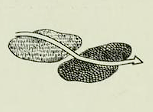
- alignment
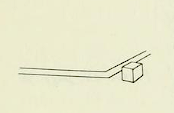
- referable to some larger system (clear destination)
- CAUSEs of unaligned path
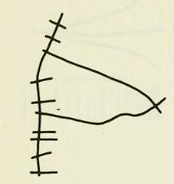
- misleading curve or succesions of turnings
- sharp separation of a path from surrounding elements
- e.g) people will be unceratin which walkways to use in order to arrive at
particular destinations
kinesthetic
- turning, rising, falling or the sense of motion along the path
- a great descending curve which approaches the destination is unforgettable
EDGES' QUALITIES
- paths act secondarily as an edge
- only way to somewhere

- sense one's position along the total length

- referable to some larger system (clear destination)
- CAUSEs of unaligned path

- misleading curve or succesions of turnings
- sharp separation of a path from surrounding elements
- e.g) people will be unceratin which walkways to use in order to arrive at particular destinations

- a great descending curve which approaches the destination is unforgettable
Edges become impressive with some qualities:
continuity
- continuous features
visibility
- should be in observer's view
- abstract contnuous but only visualized at descrete points
- increase accessibility or use
impenetrable*
- strong edges are not necessarily impenetrable
- overhead edge is elevated edge such as elevated railways
as paths
- work as paths
- share qualities of paths
DISTRICTS' QUALITIES
Districts become impressive with some qualities:
- thematic continuity in physical characteriestics
- consist of an endless variety of component: texture, space, form, detail, symbol, building type, use, activity, inhabitants, degree of maintenance, topography
- the definiteness and closure of its boundary
- social connotations
NODES
Nodes become impressive in some ways:
- have sharp, closed boundary and do not rail off uncertainly on every side
- provide 1 or 2 foci of attention
- junction node
- The junction or place of a break in transportation has compelling importance for the city observer since decisions must be made at junctions, people heighten their attention at such places and perceive nearby elements with more than normal clarity
- MUST let observer see where to enter and how to leave
- concentration node
- This kind of node characterized by highly typical space, planting and activity
- both junction and concentration
- The most successful node seemed both to be unique in some way and at the same time to intensify some surrounding characteristic
LANDMARKS
Landmarks become impressive with some qualities:
- clear features or the singularity
- contrast with background (principal quality)
- contrast with distant elements
- contrast with nearby elements
- prominence of spatial location
- at the breaks in transportation, or junction
- visible over an extended range of time or distance
- as a stable anchor
- coincides with a concentration of association
Single landmarks are weak references by themselves, thus they require sustained attention. But they can be clustered and be arranged in a continuous sequence.
ELEMENT INTERRELATIONS
These elements above are the raw material of the environmental image at the city scale. They must be patterned together to provide a satisfying form.
- groups of similar elements
- groups of unlike elements
- enhance each other
- conflict each other
THE SHIFTING IMAGE
These elements above are the raw material of the cognitive maps at the city scale. They must be patterned together to provide a satisfying map.
- groups of similar elements
- groups of unlike elements
- enhance each other
- conflict each other
Moreover, rather than a single comprehensive image for the entire environment, there seemed to be sets of images, which more or less overlapped and interelated. They were often arranged in series of levels, roughly by the scale of area involved.
The image develops, or grows, in different ways:
- some images were developed along and then outward from familiar lines of movement
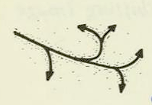
- some images were begun by the construction of an enclosing outline
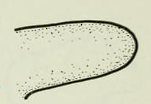
- some images began by laying down a basic repeating pattern (like path grid) and then adding
detail

- some fewer images started as a set of adjacent regions, which were then detailed as to
connections and interiors
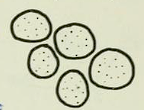
- some images developed from a dense familiar element on which everything was ultimately hung
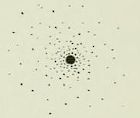
IMAGE QUALITY
Images could be distinguished according to their structural quality (there are other distinguishing ways, but I thought the structural one is the only systematic one that can be figured following some rules). There were four stages along a continuum of increasing structural percision:
- the various elements were free; there was no structure or interrelation between parts
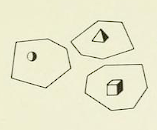
- the structure became positional; the parts were roughly related in terms of their general
direction and perhaps even relative distance from each other, while still remaining disconnected
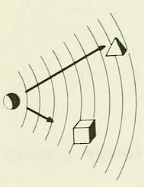
- most often the structure was flexible; parts were connected one to the other, but in a loose and
flexible manner, as if by limp or elastic ties
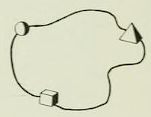
- as connections multiplied, the structure tended to become rigid; parts were firmly
interconnected in all dimensions; and any distorrions became built in

III. GENERAL QUALITIES
A well designed city MUST invite its viewers to explore the world. There are general qualities that a designer should check and may operate upon in the process of designing city elements, which enhance the imageability.
- Singularity (figure-background clarity):
- sharpness of boundry
- closure
- contrast of surface, form, intensity, conplexity, size, use , spatial location

- Form Simplicity:
- clarity and simplicity of visible form in the geometrical sense
- Continuity
- continuance of edge or path
- nearness of parts
- repetition of rhythmic interval
- similarity, analogy, harmony of surface, form or use
- Dominance
- dominance of one part over others by means of size, intensity, or interest, resulting in the reading of the whole as a principle feature with an associated cluster
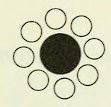
- Clarity of Joint
- joints are the trategic moments of structure and should be highly perceptible
- high visibility of joints and seams
- clear relation and interconnection
- Directional Differentiation
- asymmetries, gradients and radial references which differentiate one end from another or one side from another or one compass direction from another
- heavily used in structuring on the larger scale
- Visual Scope
- increase the range and peneration of vision, either actually or symbolically
- transparencies
- overlaps
- vistas and panoramas which increase the depth of vision
- articulating elements
- concavity that exposes farther objects to view
- clues about an invisible thing
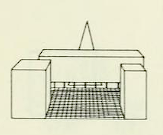
- Motion Awareness
- make sensible to the observer, through both the visual and the kinesthetic senses, his own actual or potential motion
- give the experience of motion parallax and perspective
- maintain the consistency of direction or direction change
- make visible the distance interval
- Time Series
- series which are sensed over time, inclding both simple item-by-item linkages
- what would be imaged would be the developing pattern of elements rather than elements themselves
- Names and Meanings
- non-physical characteristics which may enhance the imageability of an element
Thus, a region would be unforgettable which had a simple form, a continuity of building type and use, which was singular in the city, sharply bounded, clearly jointed to a neighboring region, and visually concave.
THE SENSE OF THE WHOLE
Form should be manipulated so that there is a strand of continuity between the multiple images of a big city: day and night, winter and summer, near and far. Those elements, landmarks, nodes or paths should be recognizable under diverse condition. It is not to say that the image should be the same, but the image should have similarity, like the shape of Louisburg Square in the snow has a shape that matches Louisburg Square in midsummer.
While taking care of continuity, the contrast and specialization of individual character is also important. With the increase of familiarity, observers's attention to detail and to uniqueness increases.
The city is not built for one person but for great numbers of people, of widely varing backgrounds, temperaments, occupations and class. The designer should create a city which is as richly provided with paths, edges, landmarks, nodes and districts as possible.